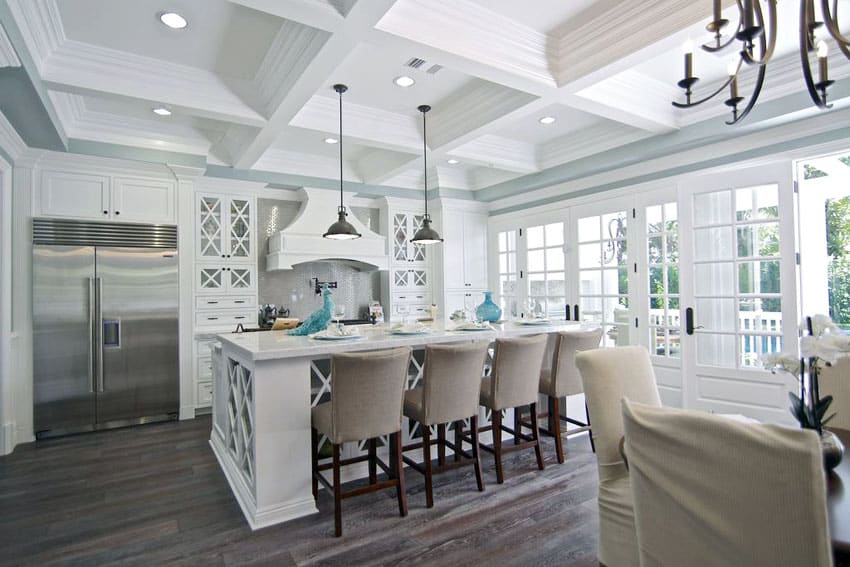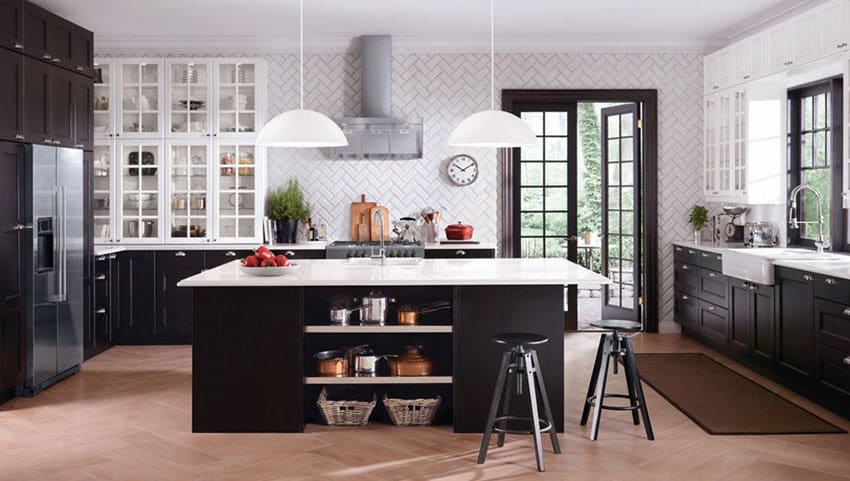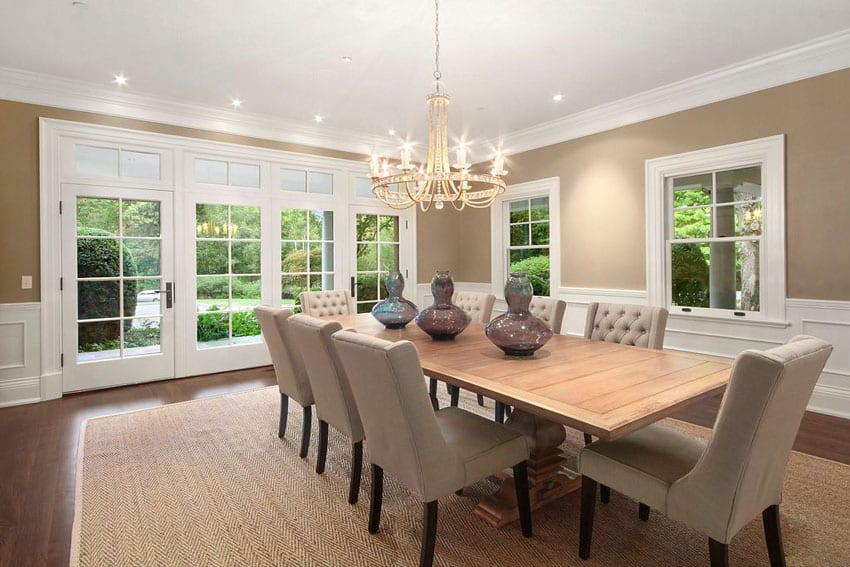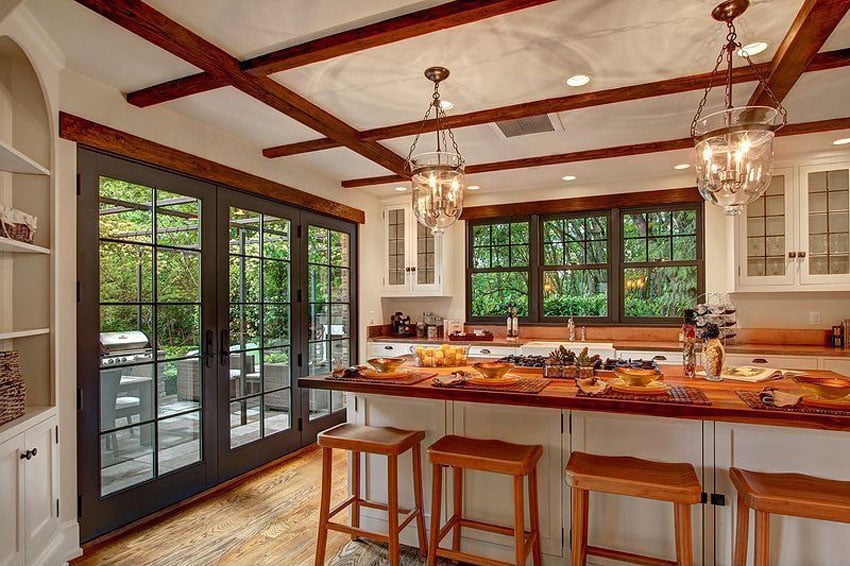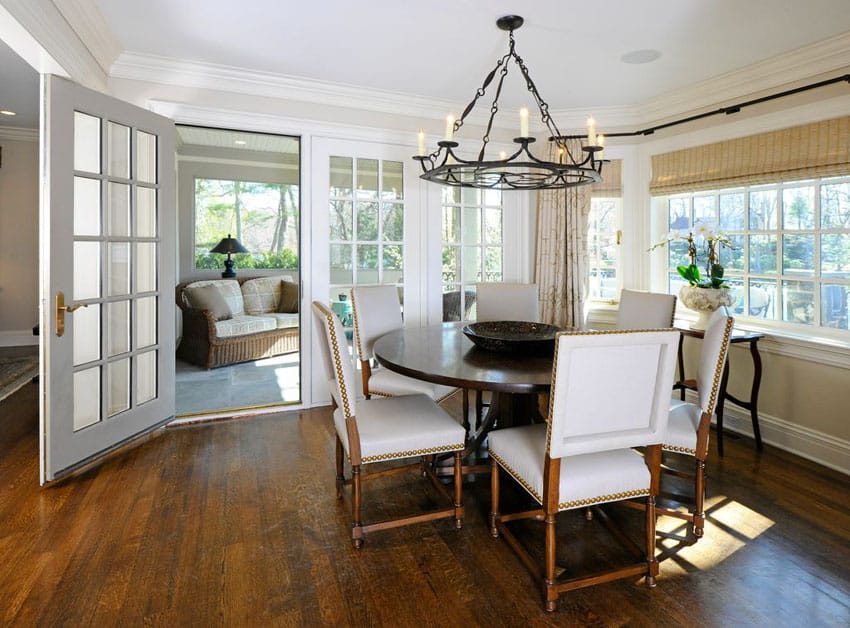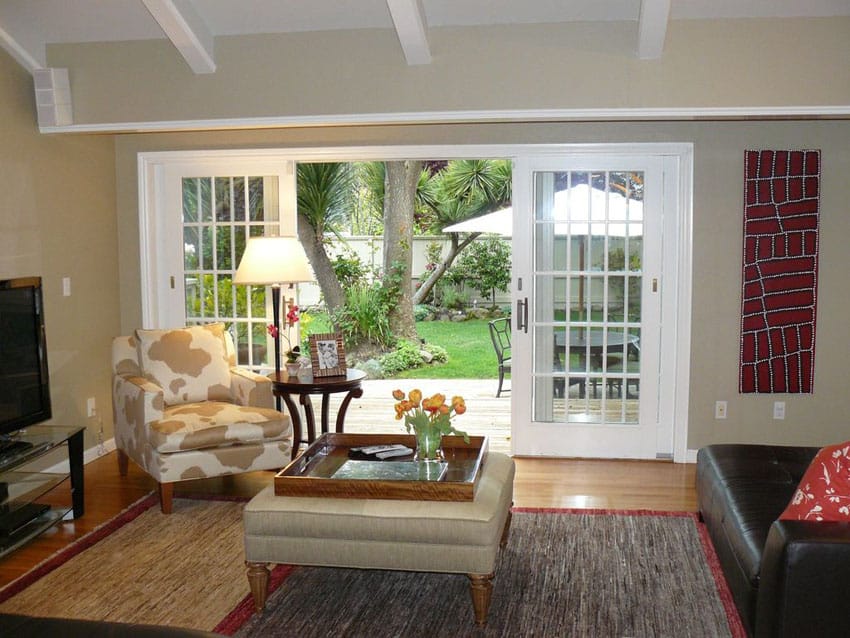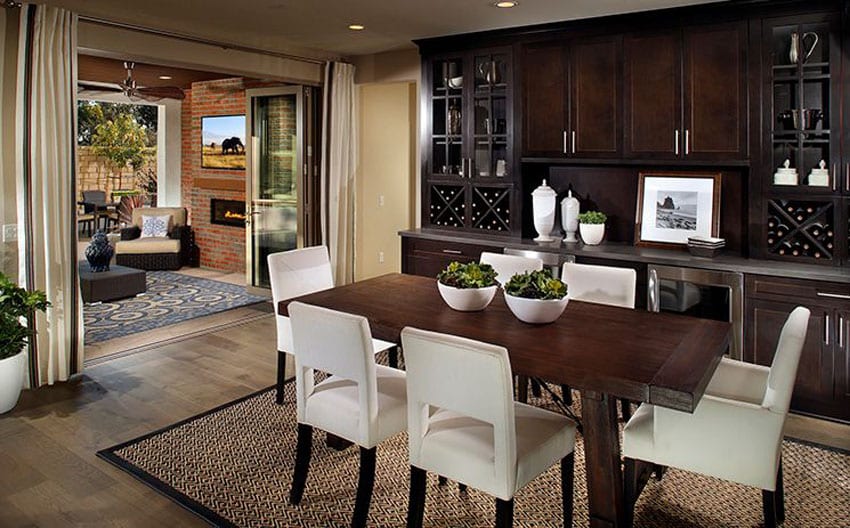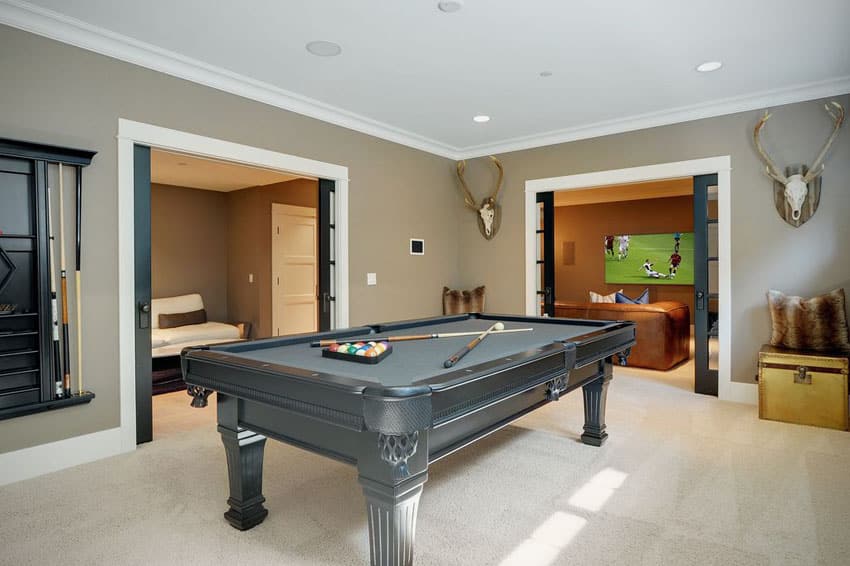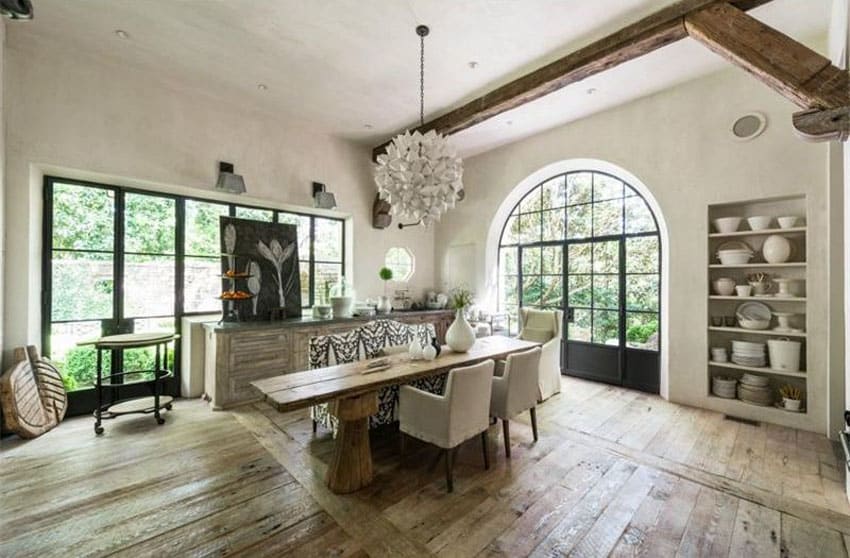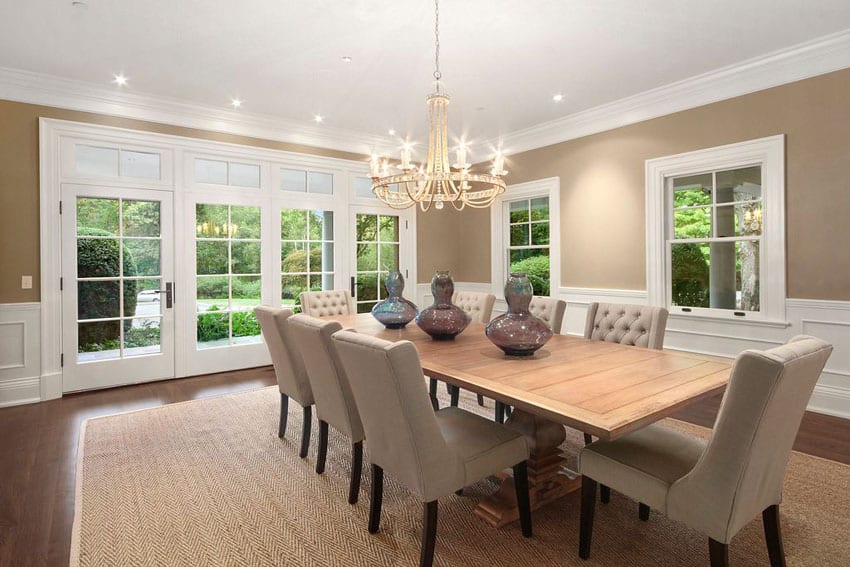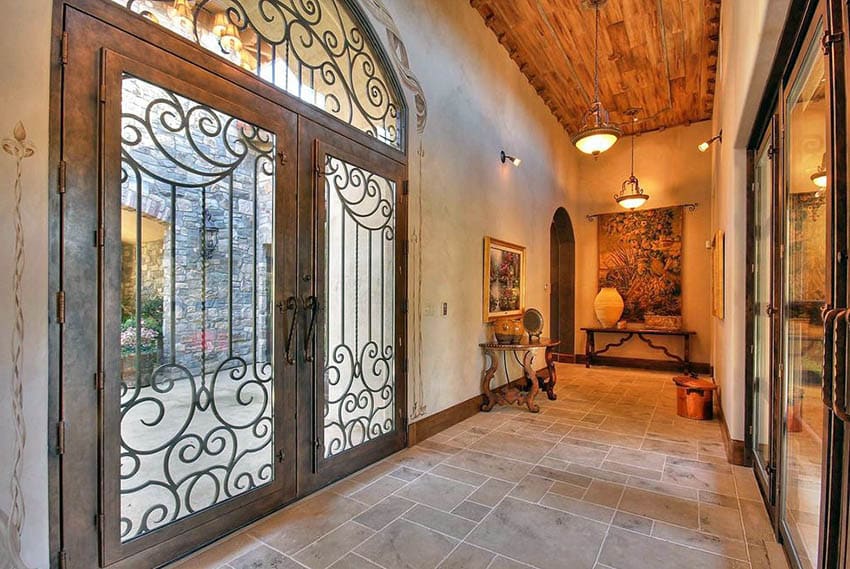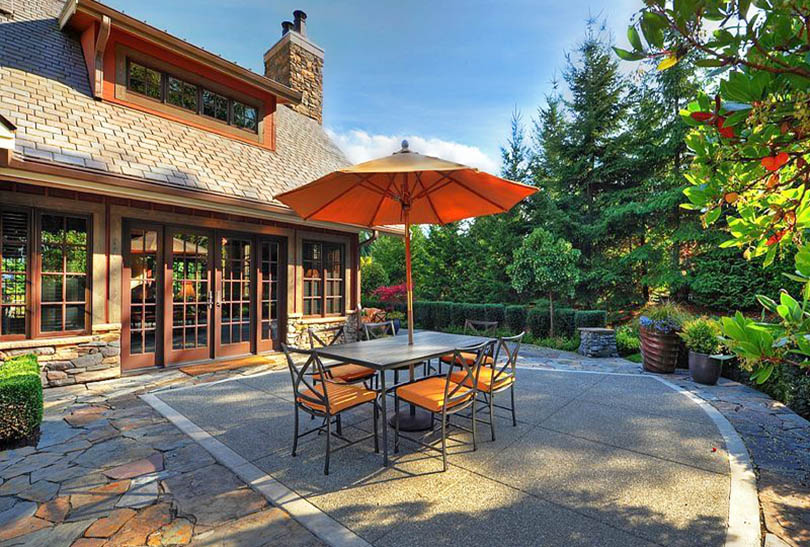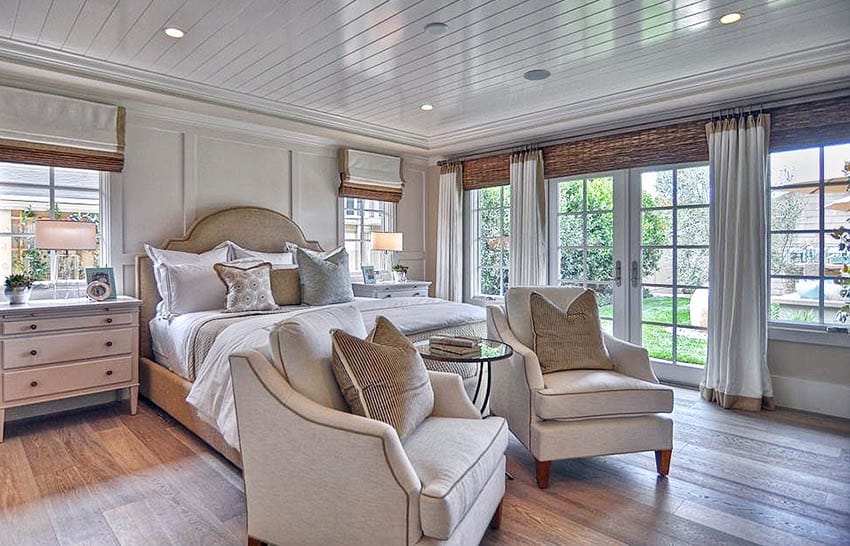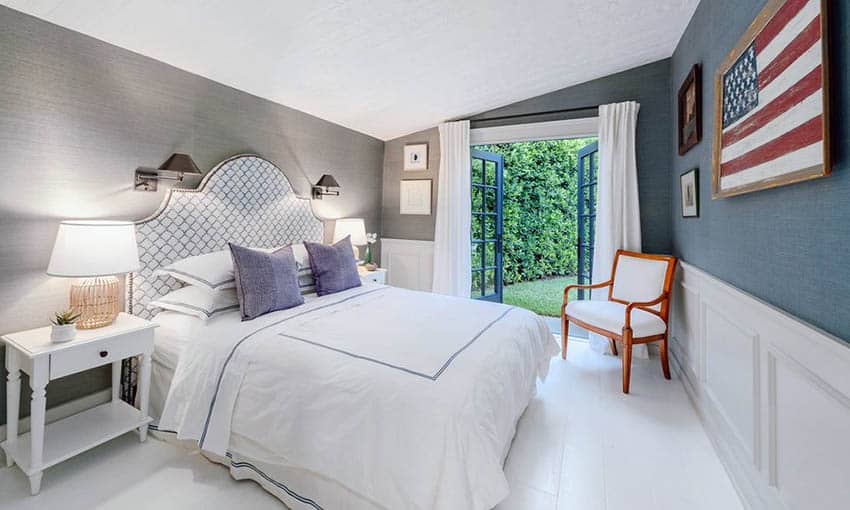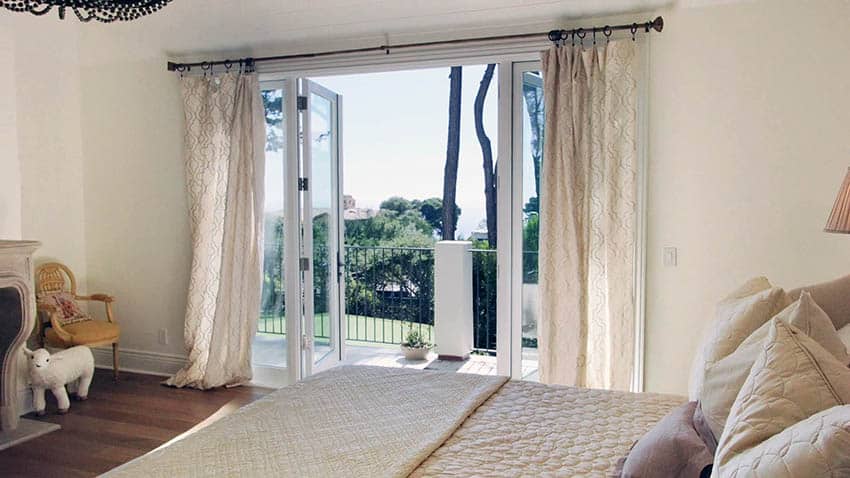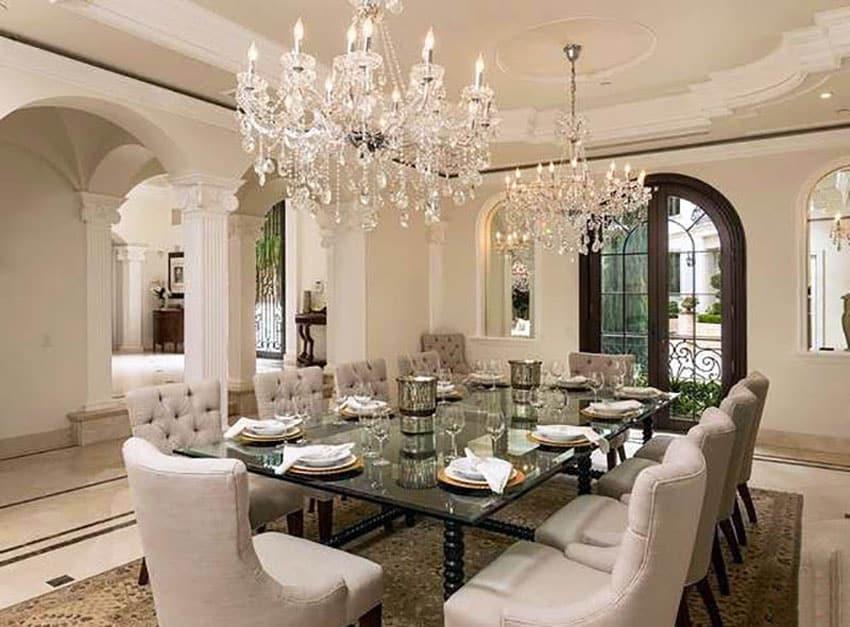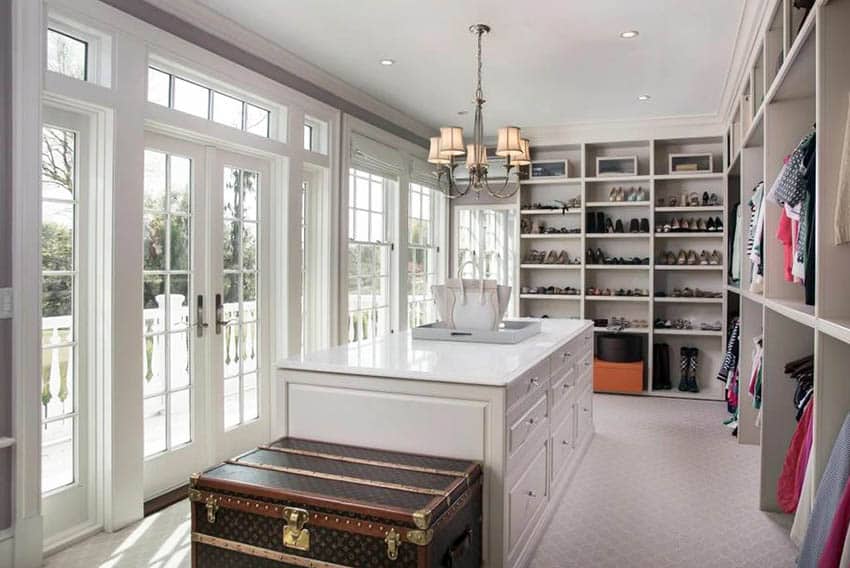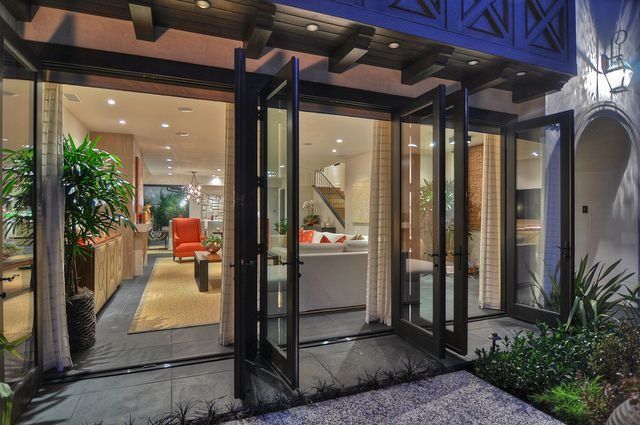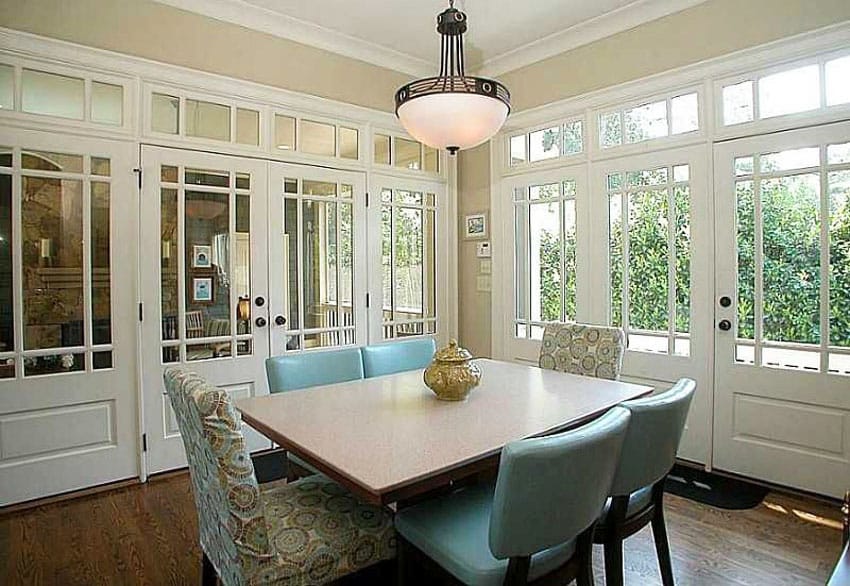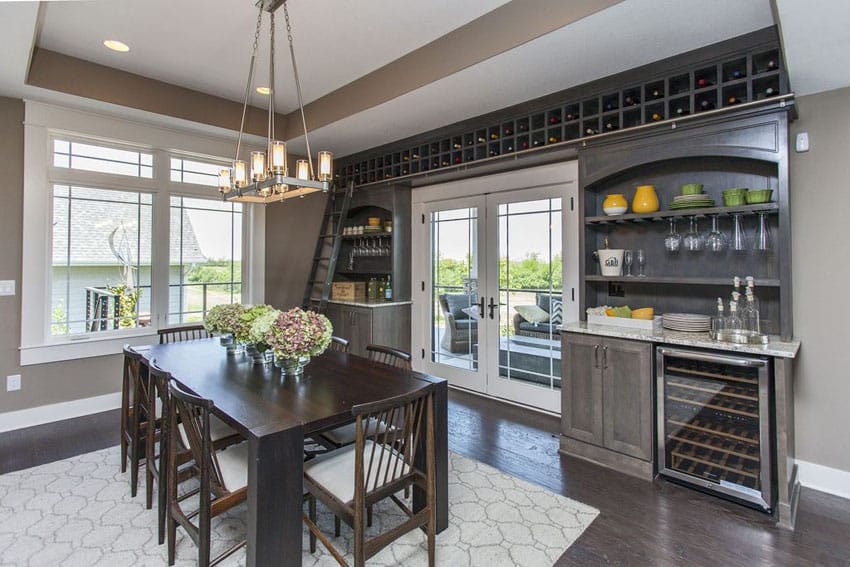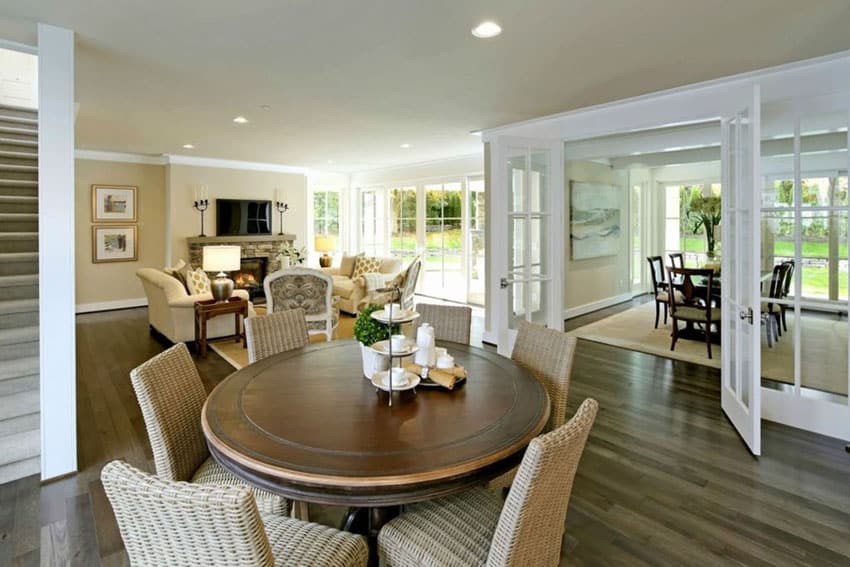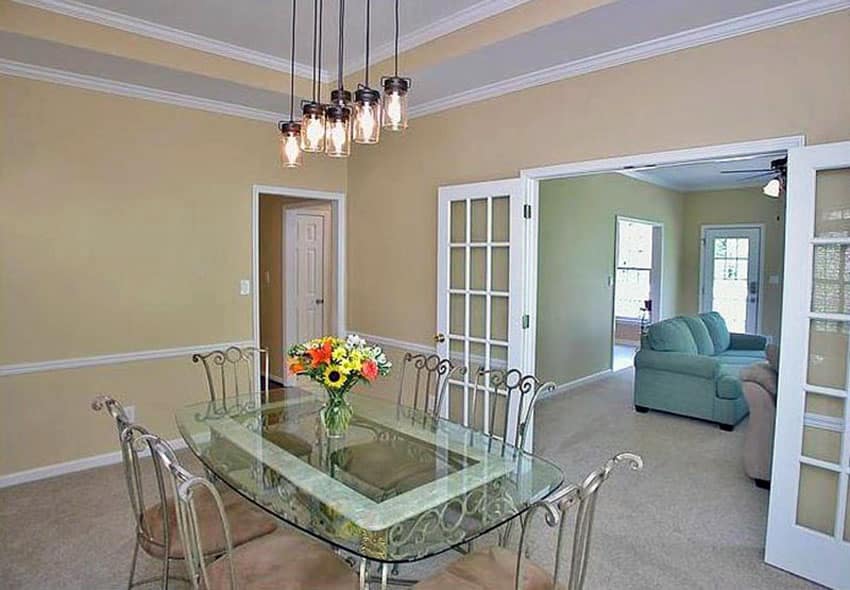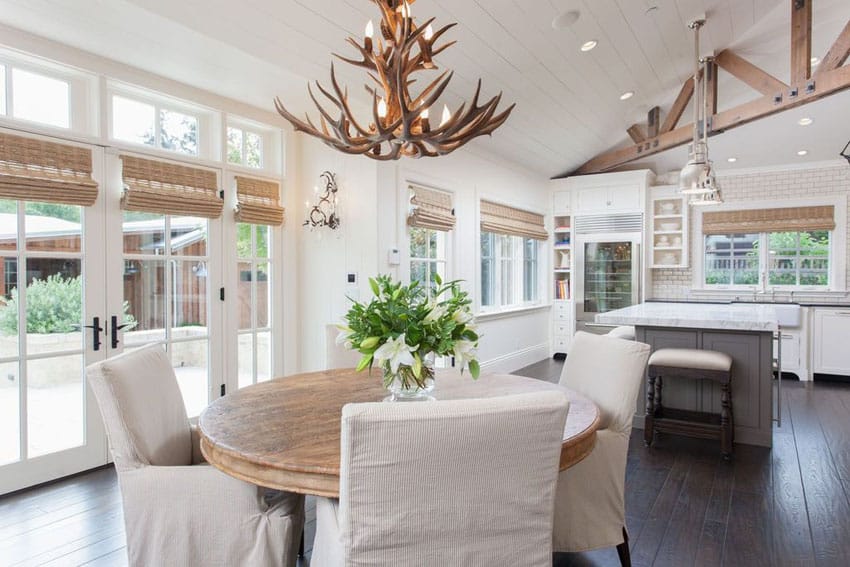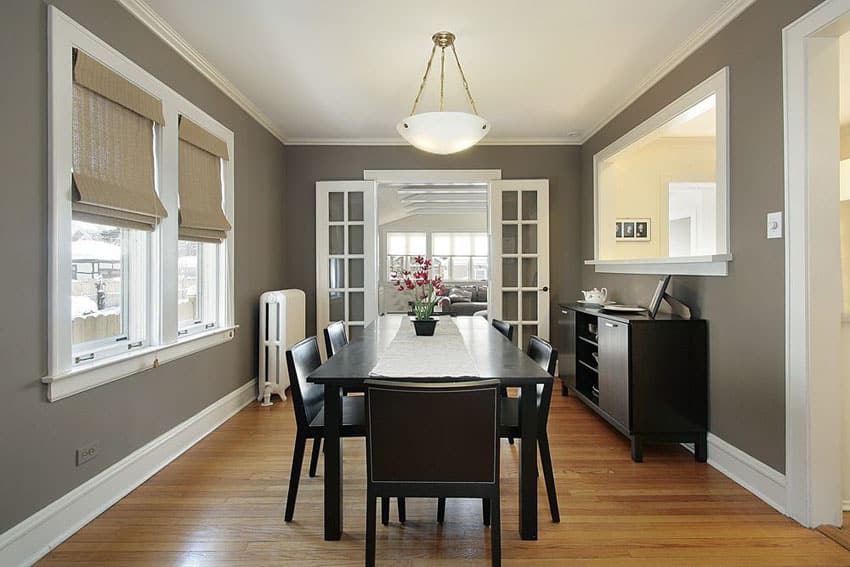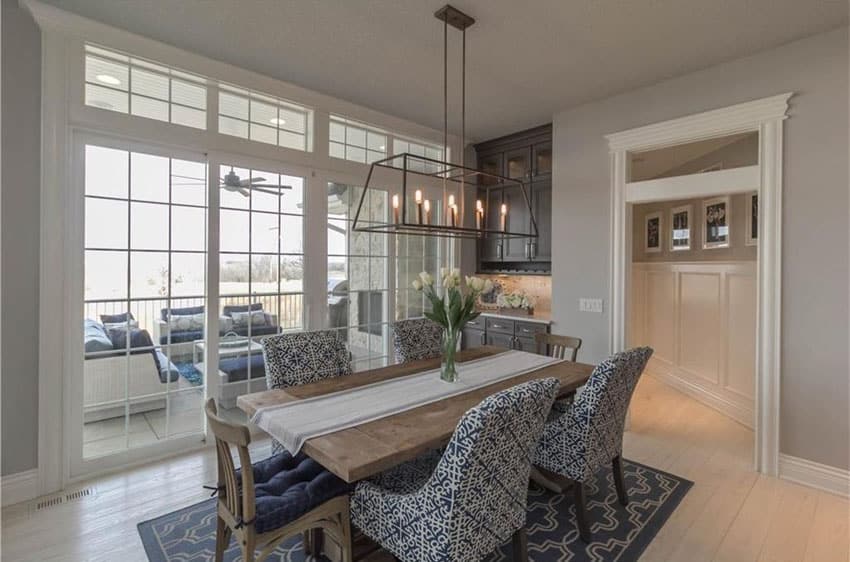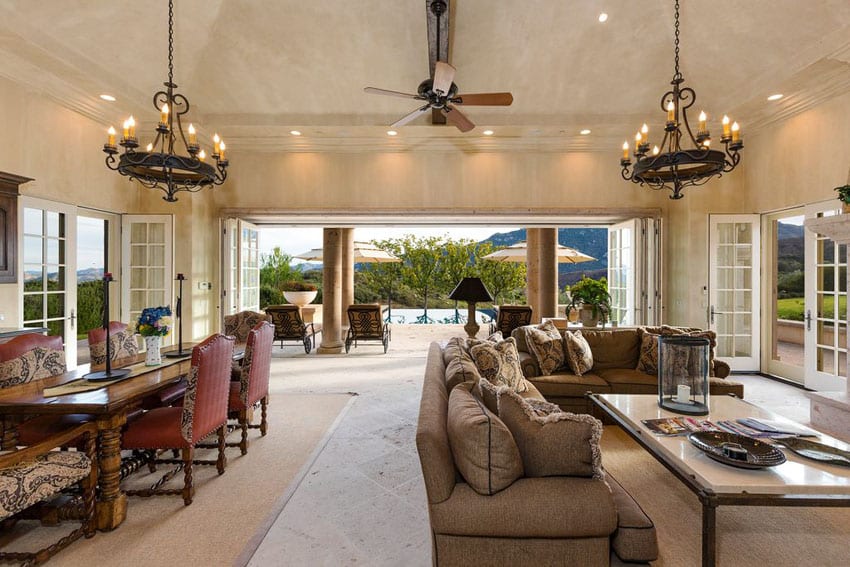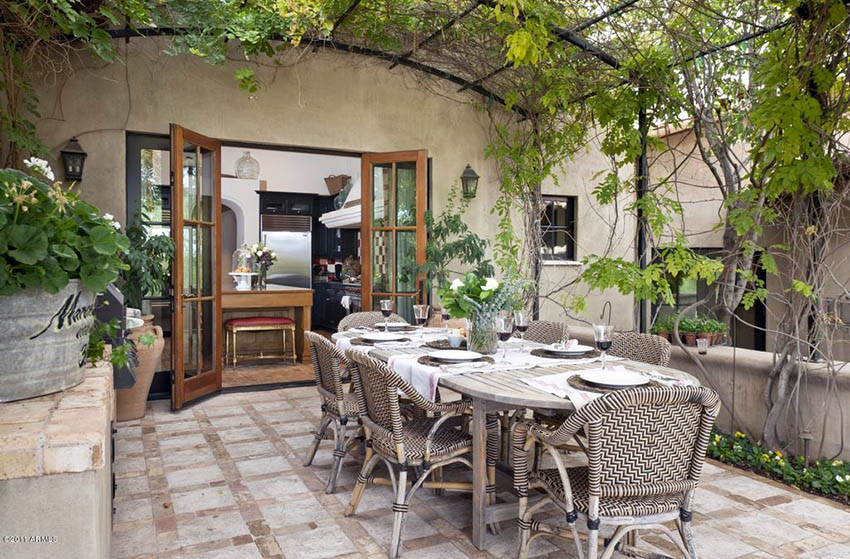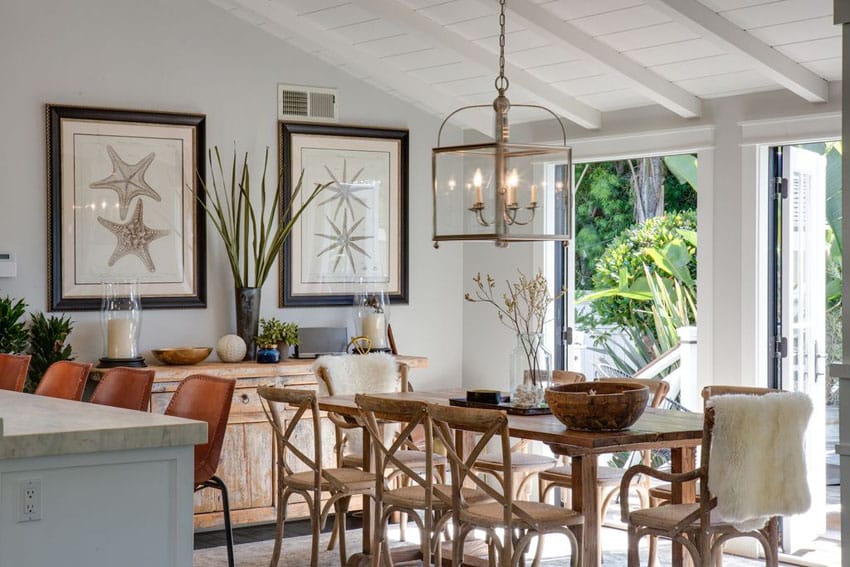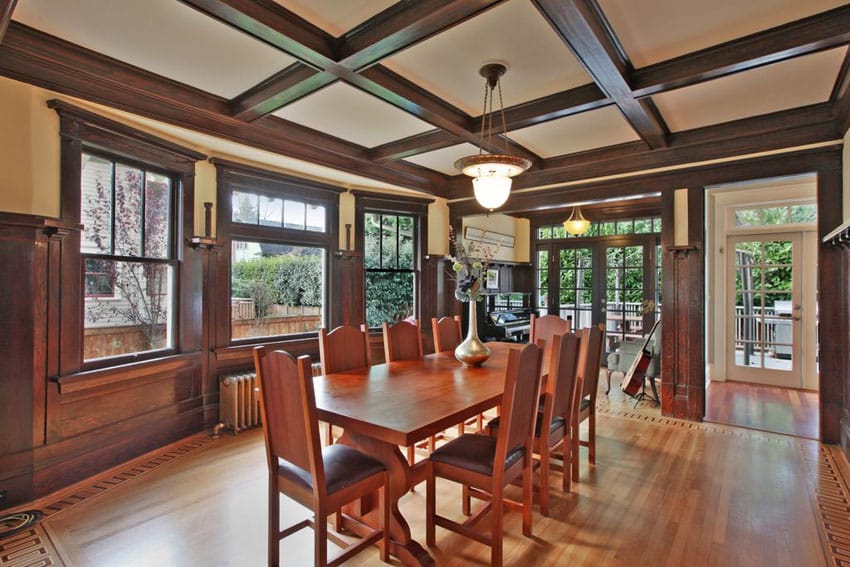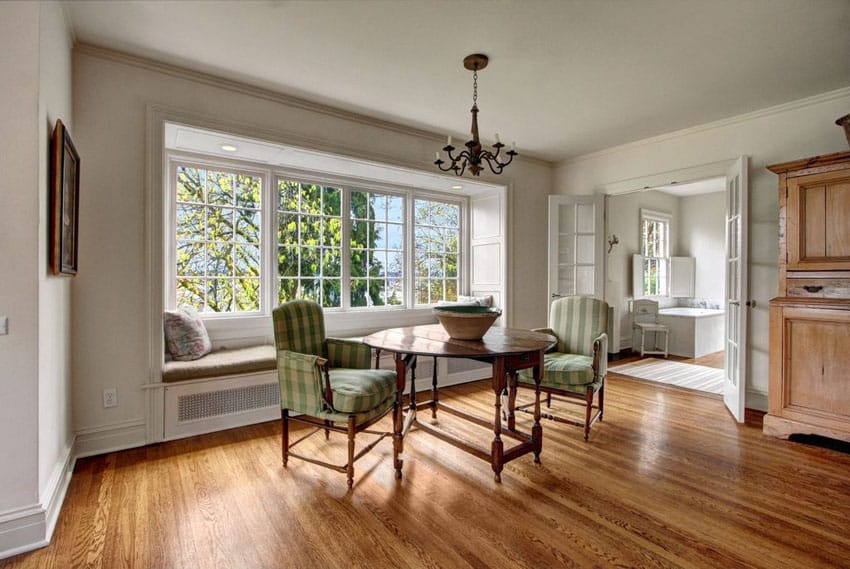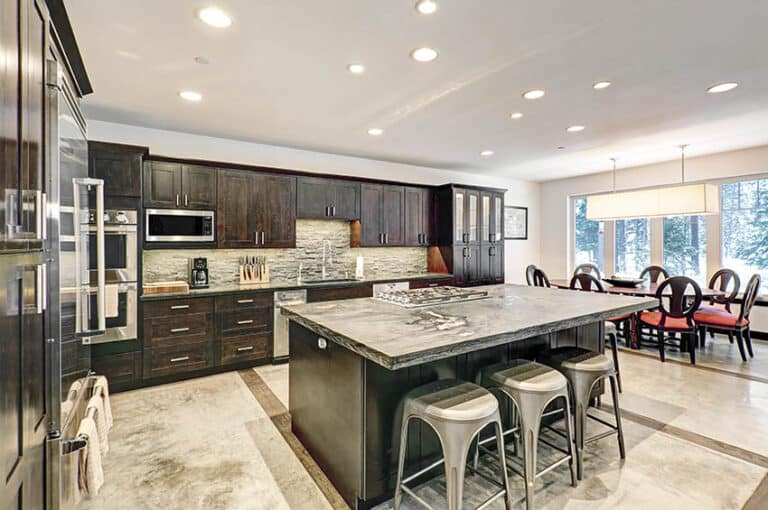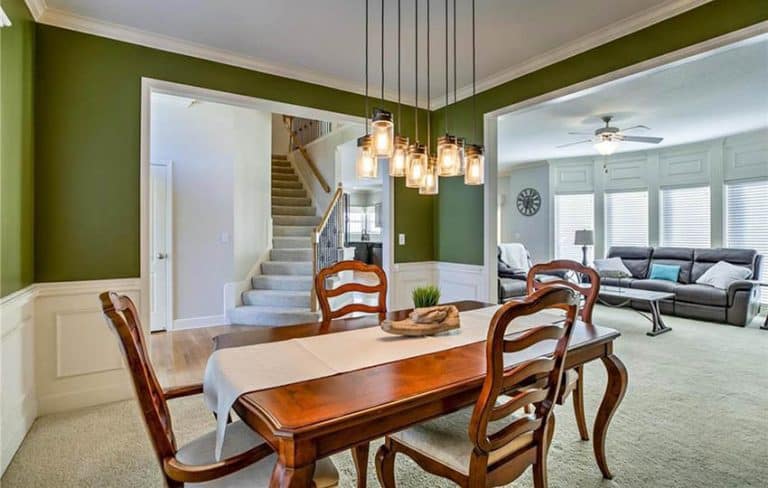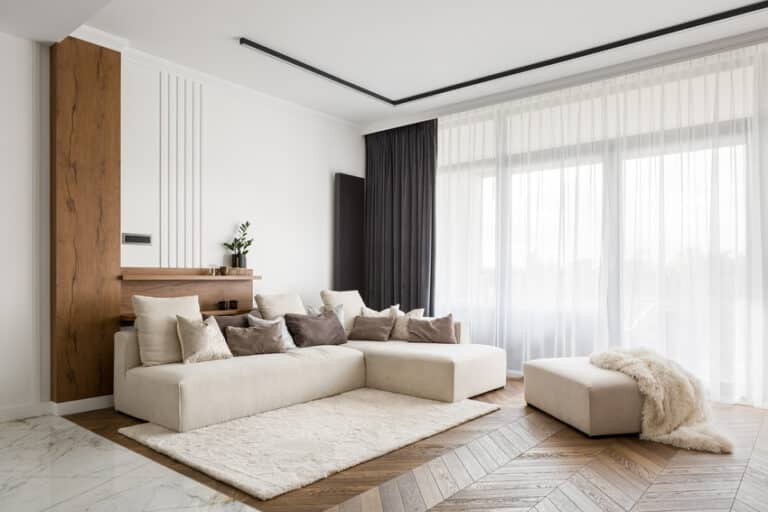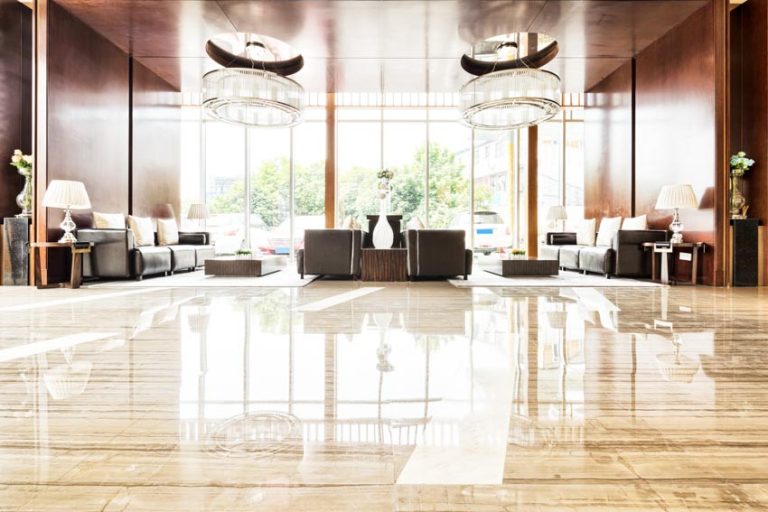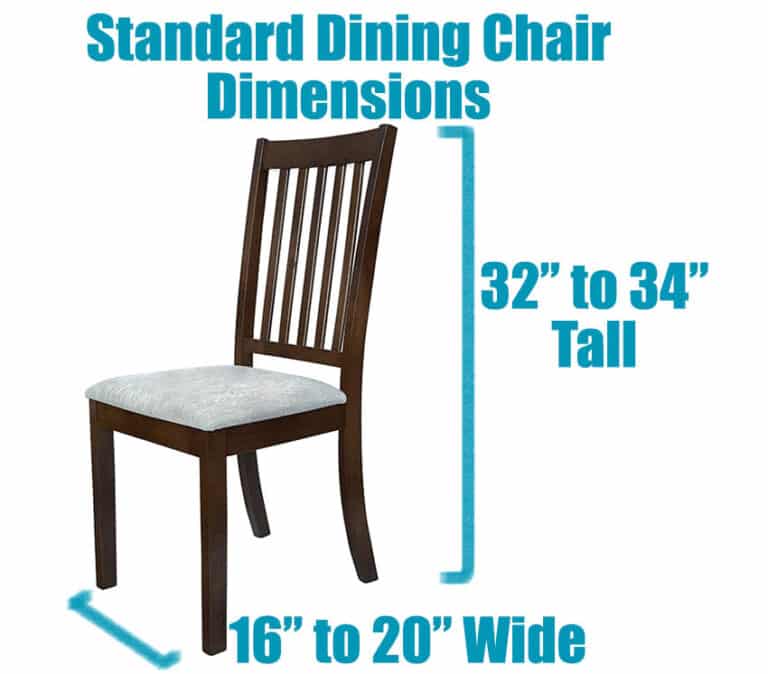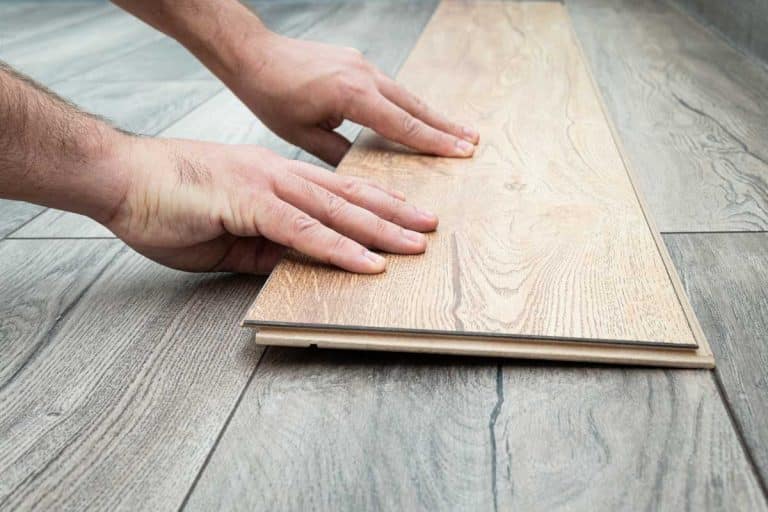Top 14 Styles of French Doors for a Charming Home Aesthetic
If you want a touch of classic style to your home, French doors might be your best bet. They offer a beautiful sense of elegance and they come in many forms so you can choose what best suits you and your home. You can’t go in blind, though, so we put together the ultimate guide to tell you everything you need to know about French doorways.
Characteristics of French Doors?
A French door is usually one of a set. Most of the time, they are a pair of double doors, one next to the other. They are also usually characterized by panes of windows extending near the whole length of the door, sometimes leaving an opaque margin around the edge of the door.
You will also notice that most French doorways close on themselves. In other words, they don’t have a vertical beam between the entryways. This way, you can have a closed doorway look or you can leave them ajar for a completely open atmosphere.
Traditionally, French doors open onto the patio or lush garden of a backyard. But you can create stylish entrances inside your home by bringing French doors to formal dining rooms, sitting rooms, dens, and master suites. – Black & Decker The Complete Photo Guide to Home Improvement, Editors of Creative Publishing international
One reason you might want French doorways is their aesthetic appeal. They have a more dramatic look than a standard entryway and thus give the space they are in a dramatic appeal.
French entrances are also energy efficient. Since they are traditionally made up of mostly windows, they let a lot of natural light into the space they are installed in but they also include that opaque margin we mentioned to keep cold air from simply getting into or out of your house. Many French entrance ways are also installed and built in a way that helps to keep air – warm or cold – inside of your house.
Door Design Types
When you are looking at French-style doorways, you have a few options as to the types of entranceways you can get. Here, we will take a look at your options.
Wood
One of the most common choices when it comes to French entryways is to use wood frames. These are great options because wood is strong and can provide a traditional ambiance for interior design.
You have a lot of different options as to how a wood door looks depending on the type of wood and finish selected. You don’t have to worry about outdoor French-style entryways made of wood getting damaged either as most are finished in a way as to weather-proof them to protect them from the elements.
The downside to wood French doorways is that not all of them let in as much natural light as, for example, a glass French door would offer. However, some wood entrances do focus on having as many windows as possible to make up the door.
Glass
Glass French doorways let in a lot of natural light. They can also be very beautiful. Many people think of plain glass panes when it comes to French doors but you also have the option of decorative or stained glass windows.
Most of these entryways aren’t made completely out of glass. Rather, the main body of the door is made of glass with margins made of a stronger material such as wood or fiberglass for exterior doorways, or MDF (manufactured wood) for interior doorways.
The main concern that people have with glass entrances is that they will be fragile. This can provide an issue with wear as well as security.
Most glass doorways use a stronger glass that is treated to be shatterproof for your safety and security. This also helps with extreme weather conditions as well.
Vinyl
Vinyl is a plastic-based compound that is being used regularly anymore in everything from fences to French doorways. While something might be made of vinyl, that doesn’t mean that it has a plastic appearance. In fact, vinyl is often used to mimic the look of other materials such as wood. They are used mostly because they are cost-effective, energy efficient, and durable.
You might run into a problem with vinyl French-style entryways when it comes to temperature. Not only can temperature lead to expansion or retraction of the doorways, this can lead to cracks in the vinyl. It is also worth noting that vinyl is a rather flammable material.
Fiberglass
Fiberglass is a form of reinforced plastic which is combined with glass fiber to give it durability. These types of entrances are lightweight and have a longer overall lifespan than vinyl entryways on average. However, the trade-offs when comparing vinyl vs. Fiberglass is the higher price tag.
One of the best things about fiberglass is it can be created to resemble real wood doors without all of the same maintenance as wood. In addition, fiberglass doorways are energy efficient and are constructed to match a variety of design styles.
Metal
Metal French-style entryways might be made out of a variety of materials. For one, there is steel. Steel is strong against the elements and it’s great for security. They are also easy to take care of provide surprisingly good insulation. On the other hand, while they won’t warp, they can get rusted, scratched, or dented.
You could also choose an aluminum entryway. These are great because they don’t rust like a different type of metal such as steel does. In addition, they are just as easy to take care of and are lighter than steel doorways. They are also rather reasonably priced, so you won’t have to pay extra to have aluminum French-style entryways in your home.
Sliding
French-style entryways typically open inward or outward on a hinge but another option is a sliding door. These sit on a track and are weighted so that they slide open and closed easily. They typically are layered with a fixed door and a mobile door. These tracks, though, can get dirty. If you don’t keep them clean, you will run into issues keeping your door efficient.
Sliding doors are typically made with large glass panels to let light in. On top of that, they are usually a little bit more inexpensive than a traditional French entryway. We will look further into the comparison of sliding doors versus traditional French-style entryways a little bit later.
Bifold
As we have noted, traditional French doors work on a hinge and open towards or away from the person using them. Bifold French-style entryways, on the opposing side, are a little different. Instead of working on a set of hinges or a track, they use both. They usually consist of a pair of entryways or more that are connected on a hinge. When used, they fold up onto each other off to the side rather than opening like a traditional door.
Oftentimes, you will see these used on closet doors. They can be used anywhere and can be a unique choice to add a one-of-a-kind style to your home.
French Pocket Doors
Another interesting choice are French pocket doors which work much like sliding entraces but with a track on the top of the door like a bifold French door. They don’t fold like bifold entryways do but rather slide, sometimes in front of or behind stationary doors or walls.
True French pocket dooways typically have what is called an interior pocket. With an interior pocket, the door would slide seemingly into the wall. Much like a standard sliding door, you will want to make sure that the track is kept clean and maintained so that the portals continue to slide easily. These are most often used as interior French-style entryways.
Custom Doors
You can also get a set of French-style entryways that is custom made to your specifications. Due to that nature, you will likely have a price that is higher than buying a set of standard French-style entryways. These are a great option if you have an oddly shaped or sized opening that you want to place a French doorway in.
Custom French entrances are also great for having a truly unique look in your home. If you want a design you can’t find somewhere else, for example, you can get that design from a custom-made French doorway.
Exterior Doors
Exterior French doorways are usually made to be a little bit stronger than interior French-style entryways because they are made to stand up to the elements. On top of that, they are also meant to keep intruders out and keep you safe inside.
Front Doors
A great way to use French doorways is as an entry to your home. This is a great way to make a grand entrance. Typically, these types of French entranceways are a little more elaborate than interior ones. An interesting choice with French-style front doorways is to have them curved at the top rather than a straight line ending in a 90 degree angle on either side. Custom features such as wrought iron or arched doorways can help make a great first impression for visitors.
Door with Dog Entryway
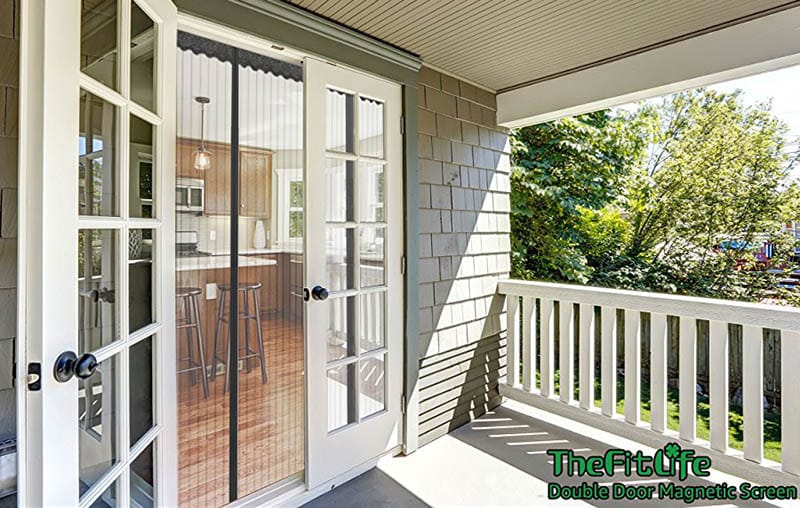
If you have a dog, you might want your front entryway or patio entrance to have a dog doorway so your pet can come and go as they please. This can be a little more tricky in a glass French-style entryway than a wood French door, for example. However, this can be worked around by simply replacing a lower panel with a mesh dog door.
French Patio Doors
Another way to use a French door as an exterior door is a way we’ve already mentioned: a French patio door. These doors lead from the interior of your home out onto a patio providing views to the backyard and plenty of natural light.. Since these are doors that might be left open to entertain, you will want a stylish design.
French Sliding Patio Doors
An additional option you have when it comes to patio doors is a sliding patio door. These doors usually slide on a track rather than open like standard French doors. These are a great option because they’re easy to operate and, since they are typically made of glass, let a lot of natural light into your home.
Interior Doors
You can also use French doors in the interior of your home. French doors can be an excellent addition to a master bedroom, for example. Visit our gallery of interior door types for more ideas.
Bedroom Doors
There’s something very luxurious and romantic about double French doors that open in to the bedroom from the patio. With these doors you can look out to your balcony or backyard patio as well as benefit from their natural light and decorative style.
Beautiful bedroom with painted blue French doors leading out to the backyard.
This bedroom provides beautiful double French doors with solid panel windows and side sash panels.
Dining Room Doors
A dining room with French doors can be elegant and inviting. You can find these doors to match practically any dining room’s design style from contemporary, or modern to traditional. French doors allow one to define a dining room space with an entry and exit. In addition they can let in natural light through their glass panels and create the illusion of a larger space.
It is not uncommon for a home to have design cues that encourage the dining room and the living rooms to be connected. Installing French doors allows for this connection, while giving the homeowner the ability to close off the dining room when the situation calls for this.
Single Doors
The majority of French doors come in pairs, however you can still find single doors to create a cohesive theme in your home. You can also find single exterior doors with sidelights (French window inserts) which enable them to fit a size not large enough for two doors side by side.
French Closet Doors
French doors are a great choice for closets as well. Their design opens up the closet space, giving the illusion that the closet is larger than it is.
French Shower Doors
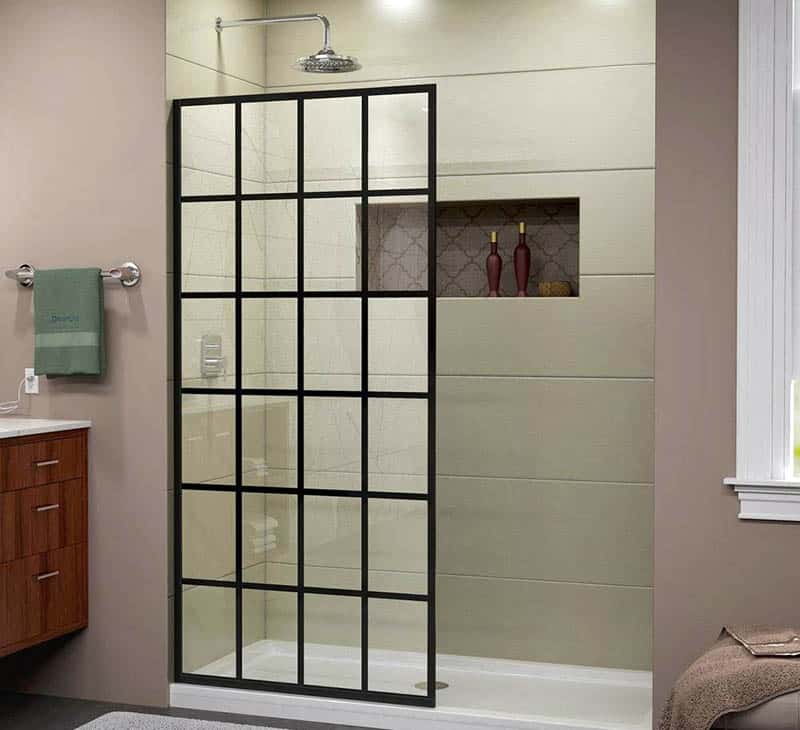
Showers are another area of the home that benefit from the addition of French doors. This is an especially good idea for older homeowners, who may have difficulties getting in and out of a standard shower. French doors provide ease of access as they do not require the user to step up and over a bathtub.
Modern Doors
Depending on the decor of your home, traditional French doors may not be the right choice. If you find this to be the case, look to modern French doors instead. Modern French doors combine the accessibility of the traditional style, with a sleek, minimalist look that is sure to blend in with any home decor.
Door Security
Of course, when you install a French door, you want to know that they’ll stay shut when you shut them. If the worst case scenario happens, you want to know that your doors will stay secured and that you’ll be safe inside your own home. When it comes to securing your doors, though, you have a few options.
First, you could always go with a classic deadbolt lock. These are locks that are usually made of steel and is defined by working via turning a knob or key rather than working as a spring action lock. These types of locks are not easily broken or forced open due to the way they are made and what they are made of.
There are a few different types of deadbolt locks. There is the single cylinder deadbolt, for one. This type of deadbolt only locks from one side – usually the inside with a knob. The exact opposite of this type of deadbolt is a double cylinder deadbolt. As the name suggests, this type of deadbolt can be locked or unlocked from either side. If you are unlocking it from the outside, though, you must have a key.
For one of the safest options, you should get a double-cylinder deadbolt that requires a key on both sides instead of one that has a knob on the inside. Since French doors are mostly glass, this prevents someone from simply breaking a window and reaching around to unlock the door. As mentioned before, since these types of locks don’t work on a spring system so they aren’t easy to jimmied or broken open.
Finally, there is a keyless deadbolt. These can refer to a simple single cylinder knob deadbolt or it can refer to something more high tech. Some examples might include a fingerprint lock or one that you enter a code into to unlock.
There are some things that you should keep in mind when choosing a deadbolt. For size, you should consider a deadbolt that is an inch in diameter and made of steel. Make sure that no parts of the deadbolt, such as cylindrical locks can be easily gripped with pliers or any other tool to prevent any tampering. For strength, you should also be sure to check that the connecting screws go into solid metal rather than screw posts and are at least a quarter-inch in diameter.
No matter what type of deadbolt you choose, you should make sure it is a mortise lock. A mortise lock is a deadbolt but instead of sliding home into a hole in the second French door or door frame, it comes within a metal housing. With mortise locks, the lock is installed both in the door and the second door or frame which makes them harder to break by breaking the housing of the lock or the material around it.
The problem with a simple deadbolt is less effective in french doors because, most of the time, instead of the deadbolt sliding into place in a door frame, it is sliding into place in the second of the pair of French doors. This is a less secure system because that door isn’t as strong as a door frame.
To combat this, you should use a three-point locking system. This type of locking system uses metal rods that extend up to the top of the door frame and down into the floor, giving your lock a little extra reinforcement.
Aside from a lock, you should take some extra precautions when you are choosing and installing French doors.
For one, you should make sure that the material your French door is made out of strong material. Whether you choose wood, metal, or vinyl, your door should be strong against someone trying to break it or force it open.
This, of course, brings to mind that French doors are typically made with a lot of glass. For security, some people will suggest that you should try to find French doors that are more door and less window than a traditional design. If you want this traditional design, though, you don’t have to sacrifice your security. Instead, look for French doors with stronger glass.
It is important to look for the right type of fortified glass when you are choosing a door. A door with tempered glass, for example, is strong but it isn’t your strongest choice. The strongest choice that you should look for is impact-resistant glass. This type of glass is treated to withstand extreme weather such as hurricanes and is even required in many areas where hurricanes are common. This type of glass is extremely helpful against burglars as well.
You should also be aware that if someone is determined, they can get in by removing the hinges on your door. If your doors open outward, this means that your doors’ hinges are on the outside and can potentially be tampered with. So, if you want to avoid the problem entirely, have your doors open inwards so the hinges are on the inside.
If you do want your doors to swing outward, you can install security hinges. On way security hinges work by using non-removable pins rather than screws in the installation of the hinges. This way, they can’t be removed from the outside. Another option is to use a set screw or studs in the hinges. These types of hinge installations are secure because the door needs to be in an open position to remove so it can’t be done the opposite way – removing the hinge to open the door.
An extra step that you can go to to ensure your security is to use a security bar. These typically sit leaning against the door at an angle, usually propped underneath the door knob to prevent anyone from opening the door. There are some more high tech options in which if the security bar is attempted to be forced back, an alarm will go off, warning you of the potential intruder.
Another type of security bar would stretch across both doors horizontally and lock against the wall on either side. A simpler option for French doors would be to get a security bar that wraps around the handles of the two doors, making them impossible to force open.
Finally, you should consider installing a door alarm into your home. This is a security measure that is more reactionary than preventative but it is a good last resort. Usually, these work by sitting beside your door and activating when the door is opened. Typically, you’ll have a few moments to enter your deactivation code if you keep your alarm armed constantly to prove that it’s you or someone you are allowing into your home.
If someone who doesn’t have the alarm comes in or forces the door open, the alarm will notify you, potentially scare the intruder off, and even alert emergency services of the situation so they can send you help even if you can’t get to the phone.
Door Hardware
When you choose a set of French doors, you will also need to choose hardware to install those doors. You should make sure you are choosing hardware that matches the door and that matches each other because most of it will be visible. Before you can choose your hardware, you need to know what kind of hardware to get.
First and foremost, you need a handle for your door. For this purpose, you have two main options. These include a lever handle and a knob. A knob is the standard choice for doors and is simply a round or cylindrical device. A lever works the same way as a knob but usually extend parallel to the ground and is turned at a 90 degree angle to open the door.
The door knob goes into a space known as the bore hole. This is relative to the cross bore hole that is on the side of the door where the latch is settled. The latch and knob are seperate pieces of hardware but they are usually sold together for your ease. You will need to note the distance from the edge of the door to the bore hole. This is called the backset. The standard backset can either be 2 ⅜” or 2 ¾”. More commonly, you will find doors with a 2 ⅜” backset.
You should also consider the thickness of your door. With most doors, you will find that the thickness depends on if its an exterior or interior door. For an exterior door, the thickness is usually thicker than that of an interior door, sitting at a typically 1 ¾” thick. An interior door, on the opposite hand, are usually 1 ⅜” inches thick. There are doors that sit outside this norm, though.
Remember, when you get a door handle, you will also need to get a latch strike. This is where the latch of one door will go into the second door. This is so that they stay latched shut. You will probably want to match your latch to your latch strike to keep a consistent look.
There are 3 main types of latches which includes a square corner latch, a rounded corner latch, and a drive in latch. You can tell them apart by the size of the area around the latch itself – the mortise plate. A square corner latch has, as the name suggests, square corners, a rounded corner latch has rounded corners, and a drive in latch is small and round.
Second, you will want to invest in a set of hinges. It should be noted that these are not needed for a sliding door but for any door that opens outward or inward, you will need a set of hinges. Typically, you will need a pair of hinges or possibly three for each door. You will want to carefully measure where these go and remember to get the proper hardware to hold them in place.
There are a couple options that you have when it comes to installing the hinges. For example, you can use standard screws or you can use studs for a more secure hinge that can’t be easily removed. Studs are a popular option for outward swinging doors because of this.
The final thing you will need for your door is a lock. The standard choice when choosing a lock for French doors is a deadbolt because it is a strong and secure option. For this, much like the door knob, you will want to obtain the deadbolt itself as well as a deadbolt strike for the deadbolt to slide home into when it locks. You have two main options when it comes to deadbolts – a double cylinder or single cylinder lock. This simply means whether you want it to lock with a key from both side or just one.
You also have the option of a simple thumb turn lock. These locks require you only to turn a knob to lock the doors. They are installed in much the same way as deadbolts but they aren’t quite as great when it comes to security.
No matter which option of lock you go with, you should make sure to carefully measure your center to center measurement or CC measurement. This is the distance from the door handle to the lock.
You will also want to invest in a weather strip for your door. Weather strips are usually a piece of rubber that goes into the frame of the doors. Their job is to create a seal when the door is closed to make sure your door is more energy efficient or, in different terms, they are used to keep protect your home against the elements getting inside.
When you are buying these pieces of hardware, it is recommended you stay within one brands line if you want all your pieces to match. After all, there are a variety of finishes on different items and they can be difficult to match when you go outside of a brand’s line. This is especially true if you are shopping online.
Sizes
When looking at buying a set of French doorways for your home, you first need to know what size fits in your home. A single door alone usually sits at 1 foot and 6 inches. This means when you have a standard set of French-style entryways, your narrowest size will be around 3 feet for both entrances.
For double French doorways you will as you might have guessed, double this size to 6 feet. To be clear, double French entryways are usually a side by side pair of French-style entryways.
You will also want to measure the swing of your French-style entryways before you install them as well. The swing of a doorway will be about the same as its length. So, for most entryways, the swing distance needs to be at least 1 foot and 6 inches.
It is important to note that the size of a door can change. If you want something different than the standard, you can order your entryways in size changes in increments of 2 inches.
Cost
When you are considering installing French-style entryways into your home, you have to consider the cost of this project.
The average cost of French doorways mainly depends on if the door is for the interior or exterior. The two main costs that you incur when you are getting French-style entrances is the cost of the doors themselves and the cost of having a company install such component into your home for you.
For materials, the range usually spent sits between $300 and $3,000. This can depend on how valuable the materials you choose are and how they are treated. For example, an interior French door that is made to simply keep your closet closed won’t cost you as much as an exterior French door that has to be treated to handle the elements. The average cost for an interior French door is around $200 each. While an exterior French patio door will set you back around $2500 on average.
Then, there is the cost of labor. An installation for French-style entryways usually costs around $500 to $1,000. This cost depends on a few factors such as where you live. Namely, though, you can depend on what contractor you select and how big of a project you are looking at to determine the price.
For instance, a simple French doorway installation will cost much less than a custom French portico, that’s a difficult installation. In short, more work for the contractor doing the installation, the more the French doorways will cost you. Most companies will charge a cost per entryway.
You can save costs by installing your own French-style entryways, though. If you are a confident DIYer, installing a set of doorways isn’t the most difficult home improvement task although sliding doorways could prove a challenge compared to traditional French doorways. A few things you need to make sure to do, though, are to follow the manufacturer’s guidelines and measure distance carefully so that the doorways can easily open once they’re installed.
Installing French-Style Doors
As we’ve mentioned in this article, you have two options when you want French doors in your home – you can have them installed or you can install them yourself. The cost of installation is something we’ve already gone over so let’s take a look at how you can install your own French doorways.
To start, you will want to remove the old door and frame. You can do this by prying the old frame free with pry bars but the hooked end of a hammer can work in a pinch as well. When you remove the trim, you will want to be careful not to damage it because you will reinstall them later. In addition, you might want to label these pieces to make them easier to put back on later. Painter’s tape is great for this because it easily comes off the sections of trim when you are ready to replace them.
Before you go any further, you should make sure that your opening for the door is perfectly shaped. To make sure the corners are 90 degrees, you can use a carpenter’s square and you can make sure the edges of the opening are straight by using a long level.
Now you will want to install the new door frame. You will want to use shims when you do this. Shims are thin pieces of usually metal that are tapered or wedged. They are used to offer support, provide a level surface, as well as fill gaps and provide a better fit for the frame against the open.
Next, you will want to drill pilot holes in the frame and shims. Here, you will want to insert nails but only far enough to hold the frame in place for the time being – you aren’t doing anything permanent with these nails. You’re going to test fit the door before you make any permanent moves.
Once you know the doorways will fit properly, you can start securing things permanently by securing screws into the initial pilot holes. When you are hanging the doorways themselves, you should follow the manufacturer’s instructions to a T.
There are a couple tips that you should keep in mind when you are installing French doorways. The main tip should be aware of is that you should be sure to measure carefully. This doesn’t just include the distance within the door frame, you should measure the swing distance of the door to make sure it can open and close properly.
Difference Between French-Styles and Sliders
It should be noted that there is a difference between sliders and traditional French doors. As we noted earlier, French doorways open like a traditional style. In other words, they swing outward or inward as a typical door does and are installed on a set of hinges.
Sliding doorways, on the other hand, are set on a guided track and weighted so that they, as the name suggests, slide open and closed easily.
Both options are rather easy to operate if they are properly maintained. However, it can become difficult if you don’t keep up with regular maintenance. For a sliding door, you will need to keep the track clean. If you don’t and instead allow dirt and debris to build up, you are more likely to see issues with the door sliding on the track. While it can be fixed, it can be more difficult during the issue than, for example, a set of hinges on a pair of traditional French doors having difficulties such as stiffness or squeaking.
When it comes to price, you might be surprised to find that there are few discrepancies. Once again, it comes down to the material you use, where you put, and who you get to install it as far as exact price. Sliding doorways tend to cost a little more but it is only a difference of around $100 or so typically.
French doors are slightly more energy efficient than sliding doorways because sliding entrance ways are typically completely glass with little to keep air regulated. Much like French doors, though, these doors are often treated to help with their energy efficiency.
A plus side for sliding doors, though, is that they take up less space. This is because while a set of French doorways needs space to swing outward to open, a sliding door is fixed on a track and doesn’t need any extra room to open.
Sliding entrance ways are typically very secure as well. This is because they can’t often be forced open and the glass that they are made of is typically reinforced to be shatterproof. This isn’t to say that other types of French doorways aren’t secure but we will get to ways to secure French entryways later.
Popular Door Manufacturers
When you are looking for window doors, the best place to look for something new is with a manufacturer. However, to do this, you need to know who manufacturers the French entryways you are looking for. In this section, we will take a look at some popular French door manufacturers.
Pella Doors
The first French door manufacturer on our list is Pella. Generally, Pella makes windows and entryways. They were established in Pella, Iowa in 1925. This was started with the invention of a window screen that rolled up and down like a screen does. So, this company was started with and built on innovation. They have even been awarded more than 150 design and product patents.
When it comes to French entrances, there are a lot of options with Pella. They divide their products up into contemporary and traditional. Traditional entryways are the types of entrances that are more intricate in their design and contemporary entryways follow a more minimalistic design set. They offer French entrances of all types as well. Visit the Pella website for more details.
Jeld Wen Doors
Another window and door company is Jeld Wen. When it comes to dual-panel doors, Jeld Wen specializes in patioentryways. As an introduction to their patio door section of their website, you will be asked what kind of door you are looking for. These styles include a traditional French door style, sliding entryways, multi-sliding door, and folding door – not quite the type of door we referred to as bifold entryways. They do offer bifold doors under their interior passageway section.
Jeld Wen is interesting because it also formed in Iowa about 30 years after Pella. They are known for their resourcefulness and their strive toward high quality products. With these ideals, you can depend on Jeld Wen to offer you products that you can trust. For more information visit the Jeld-Wen website.
Andersen Doors
Next up is the Andersen Windows & Doors. This company is a corporation through and through and some of its main focuses are ease and practicality. With their Easy Connect Joining System, installation takes less effort on your part or the installation team’s part. This saves you time and/or money during the installation process.
When it comes to options for dual-panelentryways, Andersen Windows & Doors specializes in patio openings. These entryways are primarily traditional hinged entranceways but they also have a section on sliding doors which they call gliding doors. You can also look up doors by material but they aren’t going to specifically be dual-panel entrances when you search this way. Find more info about Anderson doors on their website here.
Marvin Doors
Marvin Doors is the next manufacturer on our list. This manufacturer is one of a family of brands and has a variety of doorways for you to choose from. When it comes to dual-panel doorways, they mainly focus on patio doors in which category they have both swinging and sliding entrances. The contemporary studio section of their website does include a set of classic dual-panel entryways and a bifold door as well.
One of Marvin’s most popular lines is Impact doors. These dual-panel entrances are made to withstand extreme weather such as hurricanes. They come in bronze or beige and have an Impact Zone 3 rated performance meaning these doorways aren’t going to give into the elements. This is thanks to the use of tempered, laminated, and insulated glass.
As a brand, Marvin promises that they are dedicated not only to functionality but to enriching the places you live and work as well. The Marvin family of brands includes a few other names as well – Integrity and Infinity, to be specific – but it is Marvin itself that brings you beautiful and functional dual-panel entrances. Read more about Marvin doorways on their website.
Milgard Doors
Finally, we have Milgard Windows & Doors. When it comes to entrances, Milgard Windows & Doors specializes in patio entrances. They have a variety of dual-panel entrances to choose from in this area, though, including French style sliding patio entrances, in-swing French patio entrances, and out-swing French patio porticos. You can also choose a variety of material types such as wood, vinyl, aluminum, and fiberglass.
Milgard Windows & Doors states that they are dedicated to provided the best products to their customers above all. In doing that, they state that they value customer service to the utmost degree. With this idea and their 50 years of innovation, they work to make the best dual-panel entrances for you from start to finish. See examples of Milgard doors on their website.
Where to Find These Doors for Sale
When you are looking for dual-panel doorways, you might want to consider antique French entrances. These give your home a fantastic, dramatic flair and can give you a look authentic to a time period. Where do you find these antique French doors, though?
The easiest way to find them is online. Much like almost anything today, you can find antique dual-panel entrances on a variety of websites. Most aren’t dedicated specifically to antique entrance panels but rather antique house parts in general. A couple websites that you could start your search on would be Olde Good Things and Historic Houseparts.
There are also places you can look for antique French entryways. One such place is estate sales. Estate sales are also known as tag sales and they are used to sell a family’s estate – hence the name. These are great places to make valuable finds such as antique entrances because estates come from a higher income place than your typical garage sale. Estate sales might give you a fixed price for the items you want or you might have the chance to bid for the items.
When you do find antique dual-panel entrances, they might show their age. To combat this, these entrance will need to be restored. This is a project you can do yourself or you can have done – it can be a great DIY project but it is also easy to find someone to help you out.

